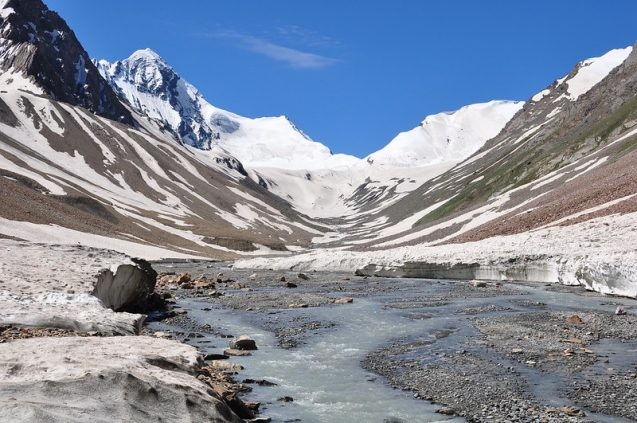The Ice Is Disappearing at Record Speed
We’ve lost 28 trillion tons of ice globally in 24 years, from 1994 to 2017, and the implications for sea level rise could be significant.

A new study has found that the world lost 28 trillion tons of ice lost in 24 years, from 1994 to 2017. To give some idea of this amount, the lost ice would be enough to cover the entire state of Arizona with a polar cap 30 stories tall (or about 100 meters).
One of the biggest concerns from this immense loss of ice is the rise in sea levels that comes with it. The perpetrators are the usual suspects: the ice of Greenland, of the minor glaciers and, recently, those of Antarctica.
Currently, Greenland and minor glaciers play a dominant role in sea level rise, while the remaining contribution is due to the phenomenon of thermal expansion of the oceans. The more we warm the oceans, which absorb about 85% of the heat due to global warming, the more these “swell” (expand) a bit like the gas in a hot air balloon when it heats up, favoring the rising of the seas.
Future estimates suggest that if we were to continue on today’s trajectory of greenhouse gas emissions and global warming, the role of glaciers in sea level rise will be less and less — in view of the fact that many will, alas, disappear — while Greenland and Antarctica will be responsible for most of the rising of the seas through the melting of their ice. The role of thermal expansion will diminish, not because the ocean will not continue to expand — rather, it will continue to do so faster and faster as it continues to warm up — but because the melting of polar ice will be exorbitant and far outweigh the effect of thermal expansion.
Antarctica and Greenland were, in the past, complicit in similar “crimes,” flooding the land and favoring a sea level several meters higher than today, when temperatures and the CO2 concentration in the atmosphere were similar to today.
However, in the past, the stimulus for change occurred for natural reasons (changes in Earth’s orbit, volcanic eruptions, etc.) and across thousands of years, causing Antarctica to wake up first from freezing numbness, followed by Greenland.
In contrast, the stimulus we are imposing on our climate, unnatural and violent, has occurred within a few decades, with Greenland reacting quickly and Antarctica starting to respond.
According to researchers from the University of Leeds, authors of the new study just published in The Cryosphere, half of all ice losses were caused by ice on land, including 6.1 trillion tons from mountain glaciers, 3.8 trillion tons from the Greenland ice sheet and 2.5 trillion tons from the Antarctic ice sheet.
These leaks raised global sea level by 35 millimeters. Considering that it is estimated that for every centimeter of sea level rise, about one million people risk being displaced from the lowlands, it is plausible that the melting of the ice between 1994 and 2017 may have already affected the lives of more than 3 million people living along the coast.
Unfortunately, a U-turn is unlikely in the coming decades without addressing the problem of reducing emissions and capturing CO2 in the atmosphere. Without such a reversal, the consequences on our planet, and on life along the coasts as we know it today, will be transfigured.
Marco Tedesco is a research professor at Columbia University’s Lamont-Doherty Earth Observatory.
